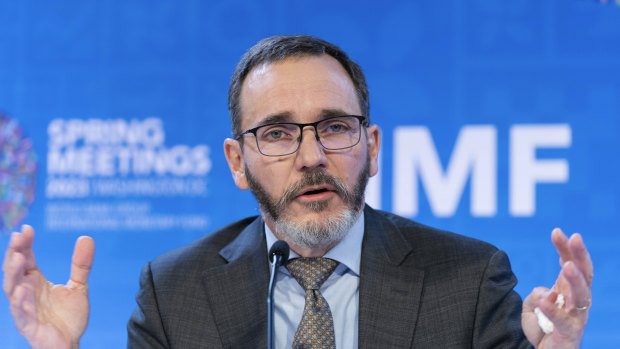The squeeze that could shut down one in 10 cafes this year
By Shane Wright
Almost one in 10 cafes, coffee shops and restaurants is tipped to go broke over the coming year as consumers save their pennies amid warnings the Reserve Bank could be forced to keep interest rates higher for longer to bring inflation under control.
In a sign of the damage the central bank’s current interest rate settings are already inflicting on the hospitality sector, credit reporting company CreditorWatch is forecasting a step-up in insolvencies at the same time as businesses slash their inventories and forward orders because of falling demand.

Almost one in 10 hospitality businesses is likely to fail over the coming year, according to CreditorWatch.Credit: Bloomberg
One of the worst-hit areas is likely to be Sydney’s western suburbs, stretching from Bankstown to Green Valley, as businesses and consumers struggle with high interest rates, insurance and energy bills.
According to CreditorWatch, 9.1 per cent of hospitality businesses are likely to fail over the coming 12 months, the highest proportion of any sector it tracks. It’s a 20 per cent jump over the past month.
Expected business failure rates across other parts of the economy are also increasing, with almost 6 per cent of arts, recreation, transport, warehousing and education businesses tipped to wind up.
There has been a 37 per cent increase in the number of businesses unable to pay an invoice over the past year and a near 50 per cent fall in the value of business-to-business orders.
CreditorWatch chief economist Anneke Thompson said businesses were caught in a perfect storm, with high interest rates and inflation driving up the cost of operating while consumer spending nosedived, especially on discretionary goods and services.
The Reserve Bank’s previous increases in interest rates were only now hitting many businesses.
“Monetary policy decisions usually lag what is happening in the broader economy, as data takes time to filter through to the RBA, and the RBA also wants to see a few months’ worth of data to be more certain that their decisions taken at board meetings are the correct ones,” Thompson said.
“While this approach is sound theoretically, in practice it means businesses have to endure high interest rates long after consumer demand has plummeted, and discretionary spending has significantly weakened.”
Those interest rates may remain elevated even longer, with the International Monetary Fund warning that inflation around the globe is “sticky” and failing to fall as quickly as expected.
In its updated world economic outlook, the fund downgraded its forecast for Australian economic growth this year by 0.1 percentage point to 1.4 per cent before lifting it to 2 per cent for 2025. Despite the downgrade, Australia’s outlook is stronger than all other developed nations bar the United States and Spain.
But the fund warned the global economy faced risks from ongoing inflation, requiring higher interest rates, and large budget deficits across most nations.
The fund’s chief economist, Pierre-Olivier Gourinchas, said inflation could come down without a global recession but ongoing issues related to the pandemic were continuing to put upward pressure on prices for services.
This could force central banks around the world to leave interest rates at elevated levels.

IMF chief economist Pierre-Olivier Gourinchas says interest rates may have to remain elevated for longer.Credit: AP
“Further challenges to disinflation in advanced economies could force central banks … to keep borrowing costs higher for even longer. That would put overall growth at risk, with increased upward pressure on the [US] dollar and harmful spillovers to emerging and developing economies,” he said.
Treasurer Jim Chalmers said the IMF report was a reminder that inflation was a lingering problem in most of the world.
“There is an international element as well as a domestic element to the inflation challenge that we have in Australia,” he said.
“Our responsible, substantial and meaningful cost-of-living relief is making things a bit easier for people, with tax cuts, energy bill relief, cheaper medicines, pay rises and more paid parental leave all kicking in from this month.”
The Reserve Bank holds its next meeting on August 5 and 6. Financial markets put the chance of an interest rate increase at one in five while the same markets expect the bank to start cutting rates early next year.
A key factor for the bank continues to be the jobs market, with unemployment drifting up by 0.4 percentage points over the past year to 4 per cent.
Data from Jobs and Skills Australia released on Tuesday points to further weakness, with the number of businesses recruiting new staff falling 8 per cent in June to just 39 per cent – the lowest share since the second half of 2021 when the country was still dealing with the pandemic.
The number of businesses expecting to increase staff numbers over the next three months also fell to 18 per cent, down 3 percentage points on June last year.
Cut through the noise of federal politics with news, views and expert analysis. Subscribers can sign up to our weekly Inside Politics newsletter.